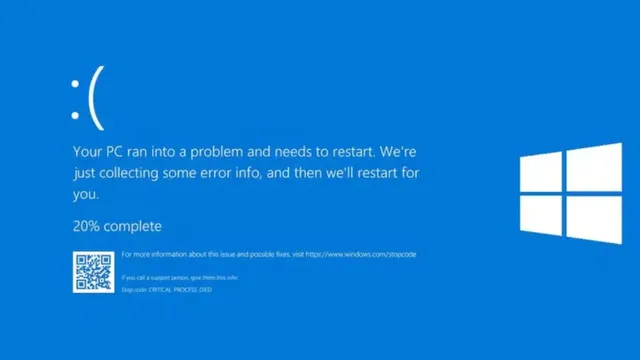- By Prateek Levi
- Wed, 02 Jul 2025 11:24 AM (IST)
- Source:JND
Windows: If you’ve used a Windows PC long enough, chances are you’ve seen it—the dreaded blue screen that appears out of nowhere, interrupts your work, and announces that your computer has crashed. For decades, that bright blue error screen, famously known as the Blue Screen of Death (BSOD), has been the universal signal that something has gone seriously wrong.
But after nearly 40 years, Microsoft is quietly retiring the iconic blue screen in favour of something sleeker—and hopefully less intrusive.
ALSO READ: Garena Free Fire MAX Redeem Codes for Today, 2 July 2025: Claim Free Diamonds, Skins & More
The BSOD Goes Black
With the upcoming Windows 11 version 24H2, Microsoft is introducing a big visual shift: the Blue Screen of Death is going black. Gone are the days of the glaring blue background, the sad face emoji, and even the QR code. In their place, users will now see a black error screen with a simpler, cleaner message:
> “Your device ran into a problem and needs to restart.”
While technical information will still be available for those who want to troubleshoot, the new screen is designed to look more modern and feel less intimidating—fitting with the rest of Windows 11’s design language.
Why the Change Now?
The switch isn’t just about aesthetics. It follows one of the biggest tech outages in recent memory: last year’s CrowdStrike failure that caused blue screens to appear on thousands of Windows systems worldwide—including at airports, stores, and corporate offices.
That incident pushed Microsoft to rethink how Windows handles serious crashes. Under its new Windows Resiliency Initiative, the goal is not only to modernise the crash screen but also to make it far less likely to appear in the first place.
And in the rare case that it does? The system will reboot much faster. Microsoft says that for most users, the reboot time after a crash will be cut down to around two seconds.
A Brief History of a Legendary Crash
The BSOD wasn’t always blue. In the early days of Windows 1.0, crash messages looked more like basic DOS errors. The blue background made its first appearance in 1993 with Windows NT, and it quickly became infamous.
By the time Windows 95 rolled out, the BSOD had entered pop culture—memorably showing up during a live demo by Bill Gates. Over the years, Microsoft added touches like a frowning emoji in Windows 8 and QR codes in Windows 10. At one point, they even tested a black screen for early Windows 11 builds, but user backlash brought the blue back… until now.
What’s Different in the New Black Screen?
- Colour: Black replaces the classic blue.
- Design: A cleaner layout with fewer distractions.
- Info: Technical data still available, but easier to understand.
- Performance: Faster reboots—about two seconds in most cases.
- Removed Elements: No more sad face, no more QR code.
According to Microsoft’s David Weston, the updated screen is all about “clarity and providing better information”. The aim is to help users and IT teams resolve problems more efficiently.
Will It Be Noticable ?
Hopefully not. Microsoft is banking on its improved system stability to keep crashes to a minimum. But in those rare moments when something does go wrong, the new Black Screen of Death is meant to be less alarming and more helpful.
ALSO READ: Nothing Headphone 1 Launched at ₹21,999: Premium Audio Meets Iconic Design
So yes, after four decades of shocking blue interruptions, the Blue Screen of Death is officially being retired. And if all goes as planned, you’ll never have to meet its darker, more refined replacement.

